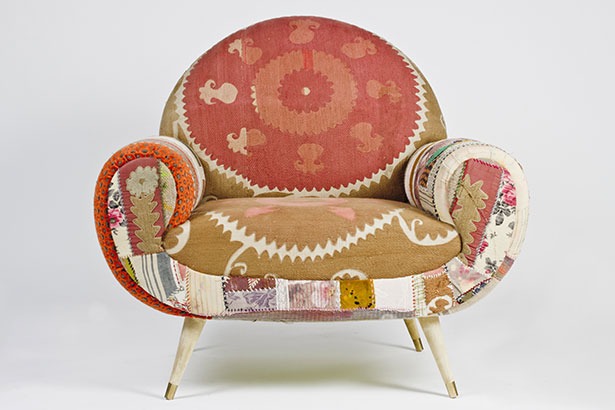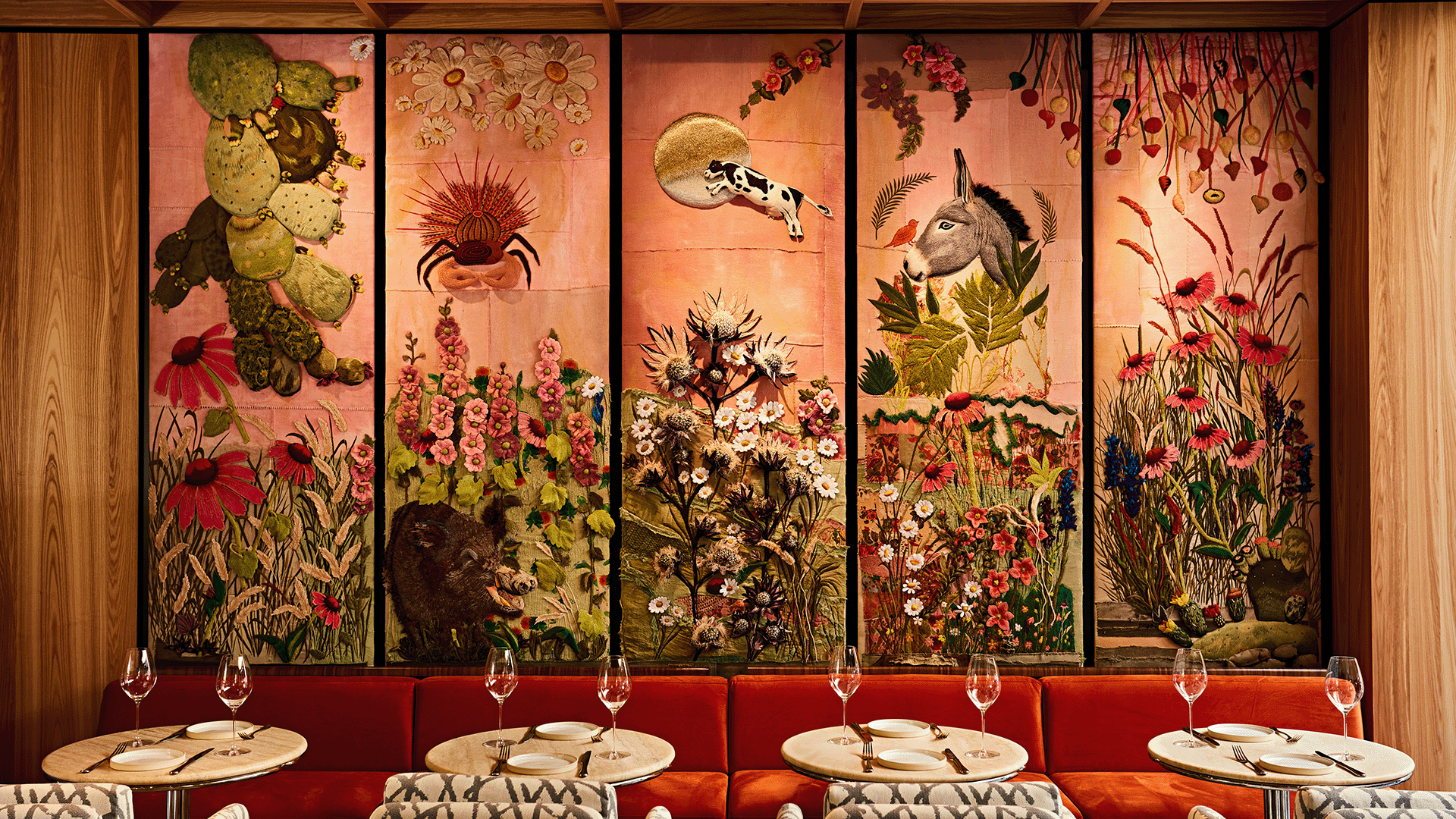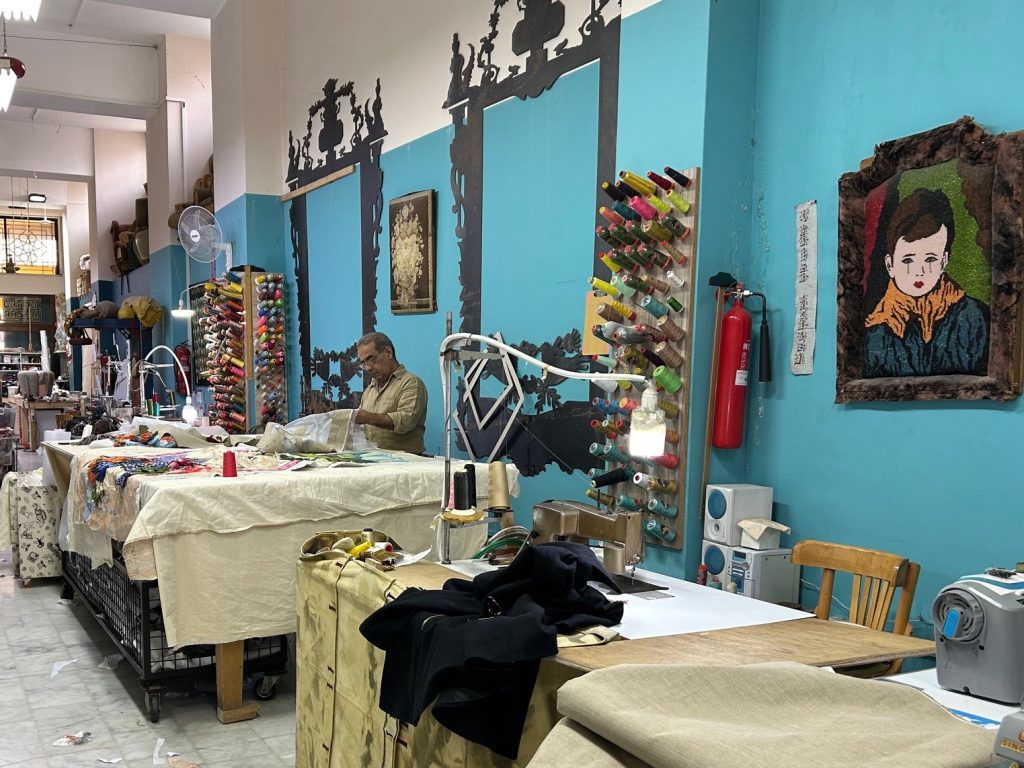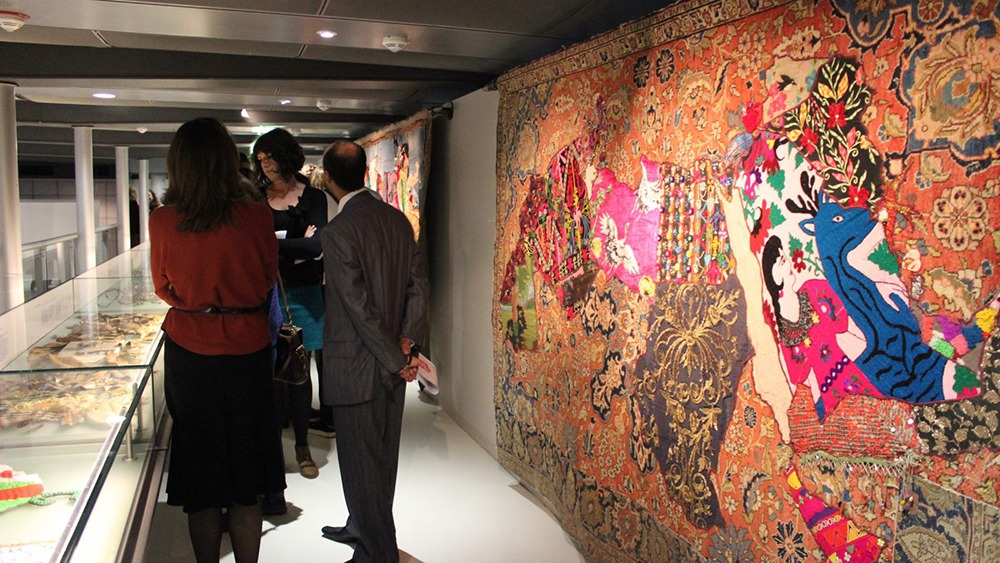Bokja produces pieces that blur the lines between functionality and art, rooted in the region’s heritage. The two talents behind the design studio, Huda Baroudi and Maria Hibri, reflect on their work, what inspires their design and Lebanon’s creative industry.
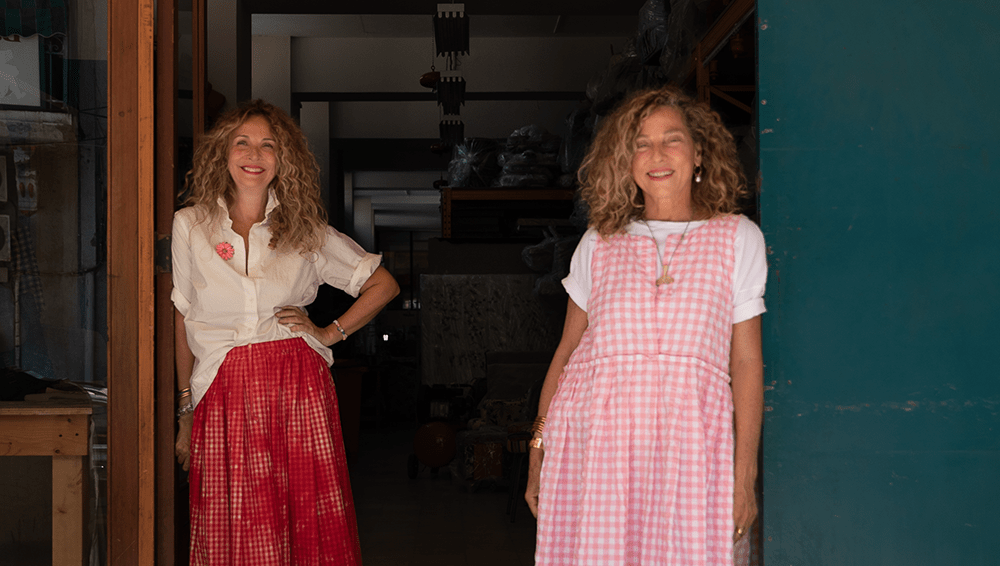
How does your Lebanese heritage inspire you?
The influence of our environment is reflected almost directly in everything Bokja. The layering of fabrics from different parts of the country and the world reminds us of the multilayered nature of our city, which is chaotic and harmonious at the same time. There is also a sensibility to both the East and the West that is so distinctive to being here. Basing ourselves in Beirut for the last 15 years was a conscious decision and has allowed us to not only be inspired by our heritage but to positively contribute to it and give back in the long term.
Being from Lebanon, where history is charged with intense emotions, design is never just about aesthetics. It’s about expressing those emotions honestly. We don’t feel obligated to tell the truth—it’s innate. When something significant happens, we reflect on how to address it through our work, shedding light, debating, and creating meaning.
Long before sustainability became a buzzword, we naturally worked in a sustainable way. After the 2006 war, we created a collection inspired by the displaced people we saw around the city, often with mattresses tied to their cars. Those mattresses were covered with inexpensive floral fabrics from Syria. We transformed that fabric — embroidering it, upholstering furniture with it — and even sold pieces in New York. It was our way of turning a painful moment into something meaningful.
Recently, seeing cars again loaded with plain mattresses, I noticed the old floral fabrics were gone. So, this time, we used beautiful linen remnants to create heart motifs — our way of expressing resilience through design.
How do you complement each other as a design team?
We always found that working together brought more ideas, passion and knowledge to the table. The two of us coming together brings unexpected results that we feel could not happen if we worked alone. It makes our work stronger.
How and why did you get into design?
We have always been passionate about art and design, with a strong background in antiques and textiles. It was a serendipitous meeting that brought us together and led us to take the jump into working in that realm.
What is your design process and how would you describe your work?
Our design and work process is an all-encompassing one, with our focus divided on different parts of the practice. We spend half of our time working closely with our artisans in our atelier houses, while the other half is spent brainstorming and strategizing with our creative team at the Bokja studio.
Our work is deeply rooted in what’s happening around us. We don’t just design for the sake of creating; we live through moments and return to express them through our work. For example, we currently have a pop-up exhibition in London. When I create something, Maria often asks, “Why are we doing this?” She’s right to question because it adds another meaningful layer.
It’s not about delivering a message but offering a commentary on the social changes surrounding us. We’re closely connected to our country and its evolving social landscape. What we create becomes a tool for communicating where we stand. Bokja is more than our voice; it’s the voice of a collective.
What can you tell us about your atelier in Basta?
Our atelier has been based in Basta since 2017. After being displaced during the 2024 war in Lebanon, we are finally back, and it feels great. As soon as the ceasefire was announced at 4 am, people rushed back to their homes. By 9 a.m., we were here, cleaning up and bringing back our machines. Everyone was thrilled to return.
For more details, call +961 1 975576, bokjadesign.com
Mukhallassiya Street, Bldg 332, Saifi Village
If you enjoyed reading this, check out our article on the Beirut Museum of Art.
Loading

